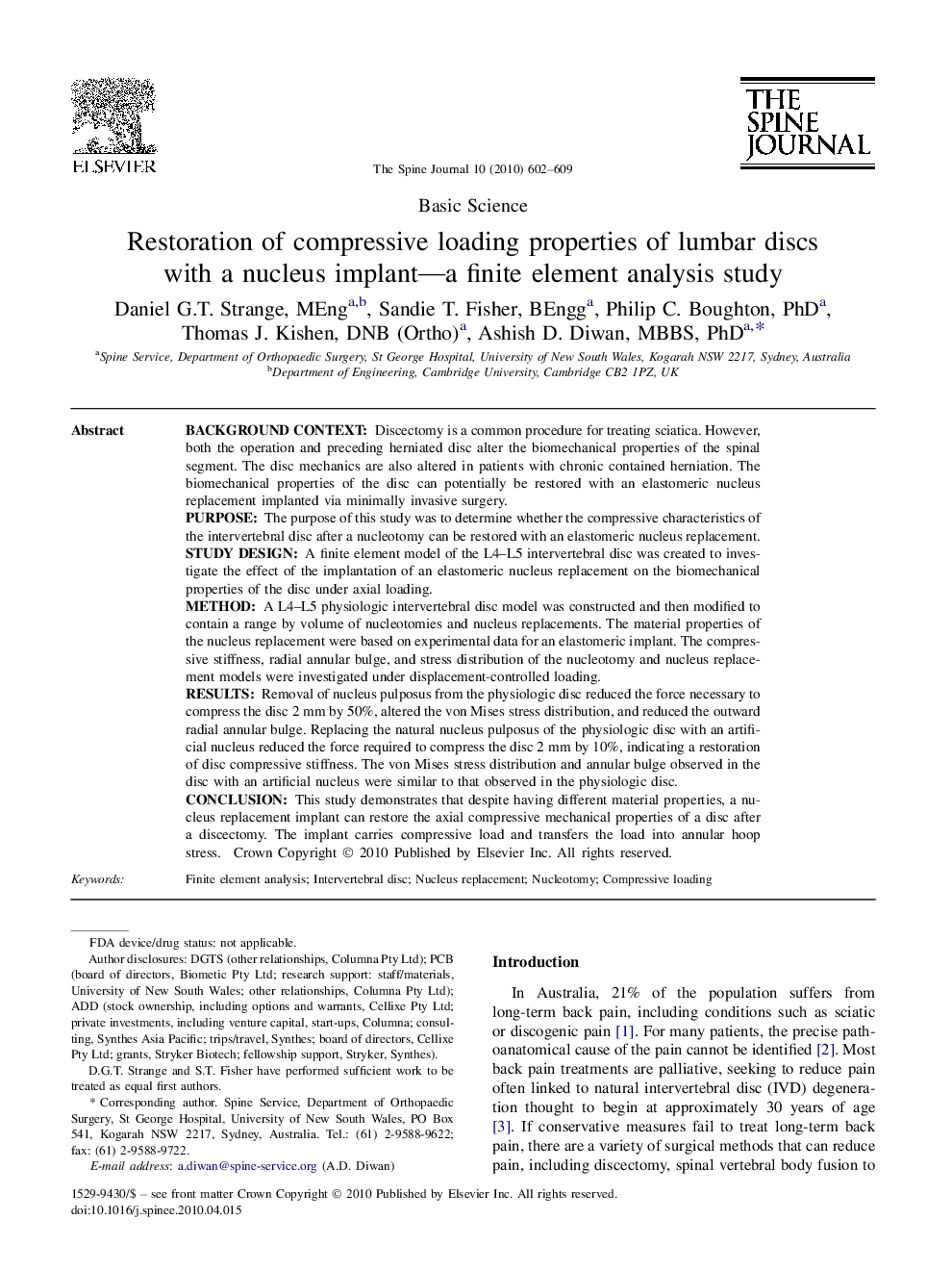| کد مقاله | کد نشریه | سال انتشار | مقاله انگلیسی | نسخه تمام متن |
|---|---|---|---|---|
| 4099557 | 1268644 | 2010 | 8 صفحه PDF | دانلود رایگان |

Background ContextDiscectomy is a common procedure for treating sciatica. However, both the operation and preceding herniated disc alter the biomechanical properties of the spinal segment. The disc mechanics are also altered in patients with chronic contained herniation. The biomechanical properties of the disc can potentially be restored with an elastomeric nucleus replacement implanted via minimally invasive surgery.PurposeThe purpose of this study was to determine whether the compressive characteristics of the intervertebral disc after a nucleotomy can be restored with an elastomeric nucleus replacement.Study DesignA finite element model of the L4–L5 intervertebral disc was created to investigate the effect of the implantation of an elastomeric nucleus replacement on the biomechanical properties of the disc under axial loading.MethodA L4–L5 physiologic intervertebral disc model was constructed and then modified to contain a range by volume of nucleotomies and nucleus replacements. The material properties of the nucleus replacement were based on experimental data for an elastomeric implant. The compressive stiffness, radial annular bulge, and stress distribution of the nucleotomy and nucleus replacement models were investigated under displacement-controlled loading.ResultsRemoval of nucleus pulposus from the physiologic disc reduced the force necessary to compress the disc 2 mm by 50%, altered the von Mises stress distribution, and reduced the outward radial annular bulge. Replacing the natural nucleus pulposus of the physiologic disc with an artificial nucleus reduced the force required to compress the disc 2 mm by 10%, indicating a restoration of disc compressive stiffness. The von Mises stress distribution and annular bulge observed in the disc with an artificial nucleus were similar to that observed in the physiologic disc.ConclusionThis study demonstrates that despite having different material properties, a nucleus replacement implant can restore the axial compressive mechanical properties of a disc after a discectomy. The implant carries compressive load and transfers the load into annular hoop stress.
Journal: The Spine Journal - Volume 10, Issue 7, July 2010, Pages 602–609